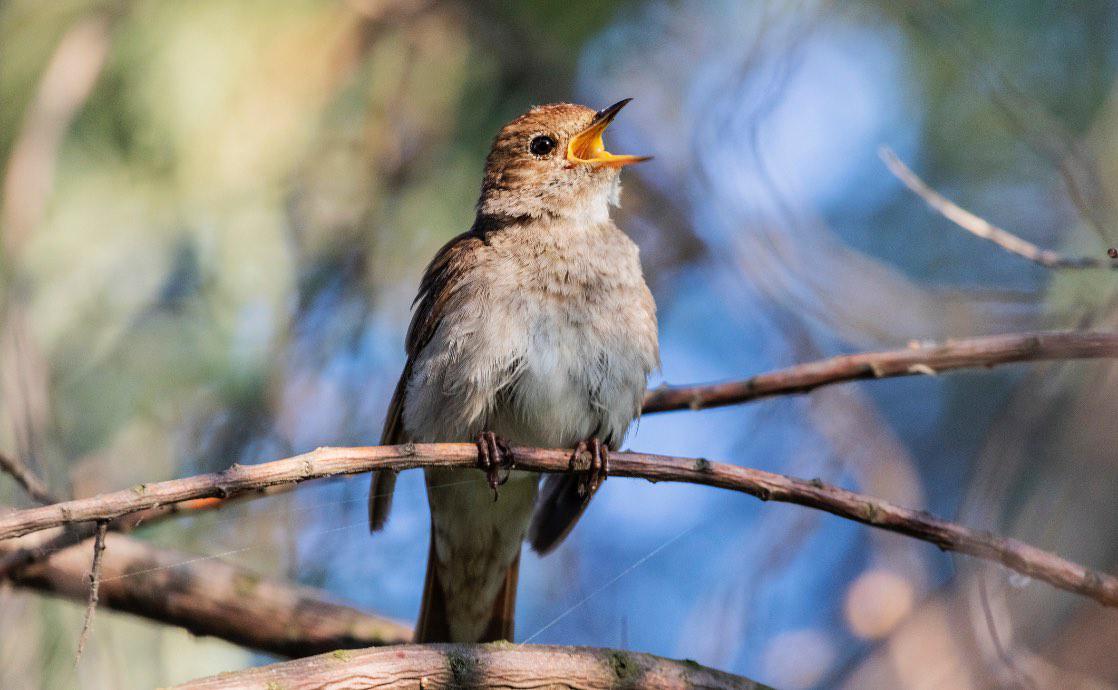The nightingale, a creature celebrated for its dulcet tones and enchanting presence, finds itself interwoven into various cultural tapestries. In the realm of Bahá’í teachings, the nightingale emerges not merely as a symbol of beauty, but as a profound emblem of the human soul’s quest for spiritual ascent. But what exactly makes the nightingale such an enduring symbol in this context? Is it merely its melodic song, or does it represent something deeper, tugging at the very essence of our spiritual existence?
To comprehend the significance of the nightingale within the Bahá’í faith, one must first delve into its characteristics. The nightingale, often described as a creature of love and devotion, sings sweetly, especially during the night. Its song resonates with themes of yearning and longing, drawing metaphorical parallels to the spiritual journey of individuals seeking connection with a higher power. This duality of existence—the nightingale’s exquisite beauty and its relentless search for meaning—serves as a poignant reminder of the complexities of human life.
Historically, the nightingale has captured the imagination of poets, philosophers, and theologians alike. In Persian literature, it often symbolizes the lover, while the rose represents the beloved. This intrinsic connection between the nightingale and the rose encapsulates the bittersweet nature of love and spirituality, inviting Bahá’ís to reflect on their own relationships with the divine. Can it be said, then, that the nightingale embodies the soul’s insatiable thirst for union with its source?
From the Bahá’í perspective, the nightingale has multifaceted interpretations. It signifies the potential of the human soul to experience profound transformation through love and devotion. This spiritual metamorphosis is akin to the nightingale’s evolution from mere existence to a being infused with purpose and passion. In this regard, the nightingale acts as a muse, compelling individuals to strive for a higher state of consciousness, akin to its celestial song that transcends the mundane.
Notably, Bahá’í teachings emphasize the significance of music and the arts as vehicles of spiritual expression and enlightenment. The lyrical quality of the nightingale’s song exemplifies the art of spiritual expression, instilling joy and elevating the soul. Music, in this framework, particularly that which resonates with the divine, can awaken dormant spiritual faculties within individuals. Thus, does the nightingale not encourage us to listen attentively to the symphony of existence around us?
Moreover, in Bahá’í thought, the nightingale serves as a metaphor for the concept of service. Just as the nightingale dedicates itself to the act of singing, individuals are called to dedicate themselves to the service of humanity, drawing analogies from its selfless devotion. This notion of selfless service is imperative, as Bahá’ís believe that individual progress is intricately tied to collective advancement. The challenge, therefore, lies in accelerating one’s spiritual growth while contributing selflessly to the betterment of society. How can one harmonize these pursuits?
The symbolic meaning of the nightingale extends into the realm of trials and tribulations. The nightingale’s nightly serenades are born out of an intrinsic understanding of pain and longing, mirroring the human experience of suffering and loss. Trials serve as essential catalysts for spiritual maturation. Bahá’ís are taught that enduring life’s challenges can lead to growth and enlightenment. The nightingale’s song thereby becomes a powerful allegory for resilience, signifying that even in moments of sorrow, there lies the potential for beauty and healing. Such is the paradox of existence.
Furthermore, the nightingale’s association with beauty prompts believers to consider the aesthetic dimensions of their spiritual lives. Bahá’í teachings advocate for the cultivation of beauty—in thought, action, and society at large. Just as the nightingale adorns its surroundings with melodious refrains, individuals have the responsibility to enhance their environments through loving actions and uplifting contributions. As a result, the nightingale not only symbolizes personal devotion but also a call to aesthetic excellence in the broader context of community life.
Diving into the theological implications, the nightingale also represents the divinely inspired teacher or messenger, echoing the voices of the Manifestations of God. These Messengers, akin to the nightingale, bring forth knowledge and guidance to illuminate the path for humanity. In this light, comprehending the nightingale’s role expands to encompass broader themes of enlightenment, discernment, and the pursuit of truth. Believers are encouraged to listen for the ‘songs’ of truth within their hearts and societies, seeking the guidance that nourishes the soul and fosters unity.
As we parse through the complexities of the nightingale’s symbolism in Bahá’í teachings, a final question emerges. In this age characterized by discord and division, can we, like the nightingale, learn to sing our unique melodies in harmony with one another? Embracing the nightingale’s essence calls for an introspective journey, prompting individuals to reflect on their lives, their relationships, and their commitments to the upliftment of others.
Ultimately, the nightingale transcends its role as a mere avian entity; it becomes a potent symbol of spiritual yearning, loving service, artistic expression, resilience amidst adversity, and unity in diversity. It beckons individuals to explore the depths of their own spiritual essence while fostering a collective ethos of love, beauty, and justice. In contemplating the teachings of the Bahá’í faith, one may find that the nightingale’s call resonates deeply within, inspiring them to navigate the complexities of existence with grace and purpose.
